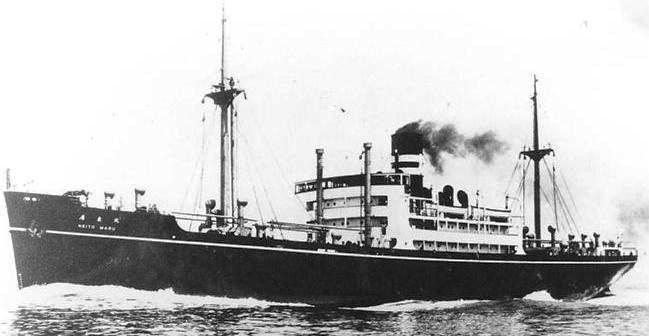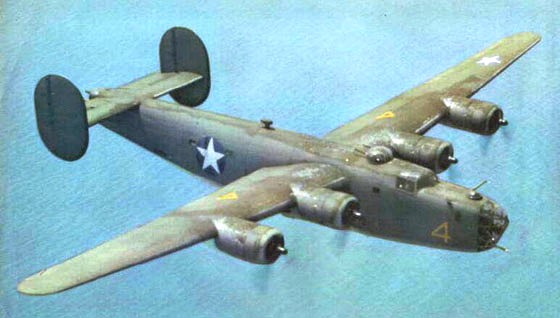ZATSUYOSEN!
 (HEITO prewar)
(HEITO prewar)
IJN HEITO MARU:
Tabular Record of Movement
© 2011 Gilbert Casse, Bob Hackett and Peter Cundall
Revision 1
3 October 1934:
Nagasaki. Laid down by Mitsubishi Jukogyo K.K. Zosensho
shipyard for Osaka Shosen K.K., Osaka
23 March 1935:
Launched and named HEITO MARU. [1]
31 August 1935:
Completed and registered at Osaka.
6 September 1935:
HEITO MARU is placed on O.S.K.’s Tokyo ~ Takao,
Formosa (now Kaohsiung, Taiwan) service to transport bananas from Formosa to
Japan.
July 1937: The Marco Polo Bridge (The"First China Incident") Incident:
Hun River. Japanese troops fire blank cartridges during night maneuvers at
the Marco Polo Bridge. Chinese troops across the river fire back, but do not
cause injuries. At morning roll call, the Japanese discover a soldier missing
and assume the Chinese have captured him. The Japanese demand entry to the
Beijing suburb of Wanping to look for the soldier, but the Chinese refuse. The
Japanese shell the city and an undeclared war on China begins.
E 1937:
HEITO MARU is requisitioned by the Imperial Army.
E 1938:
Released to her owners.
E 1939:
HEITO MARU is again requisitioned by the Imperial Army.
E 1941:
Released to her owners.
31 August 1941:
Requisitioned by the IJN as a transport (Ippan
Choyosen). [2].
6 September 1941:
Yokohama. Enters Mitsubishi Heavy Industries K.K.
shipyard to start conversion to her military role.
20 September 1941:
Registered in the IJN under internal order No.
1093 and attached to the Sasebo Naval District as an auxiliary transport, (Ko)
category. Her home port is Sasebo. [3].
8 October 1941:
The conversion is completed.
8 November 1941:
Departs Futami-ko, Hyogo Prefecture to operate in
the South Seas area (Japan mandated islands).
14 November 1941:
Arrives at Iwo Jima, Ogasawara Gunto (Bonins).
E November 1941:
Departs Iwo Jima and arrives at Shibaura, Tokyo at an
unknown date.
1 December 1941:
Departs Shibaura.
E December 1941:
Operates in the South Seas area.
26 December 1941:
Arrives at Yokohama. Departs later and arrives at
Sasebo at an unknown date.
8 January 1942:
Departs Sasebo.
8 March 1942: Operation "T" - The
Seizure of North Sumatra:
At 1600 (JST), the northern Sumatra invasion
convoy departs Singapore consisting of Navy transports HEITO and TATSUMIYA MARUs
transporting the Kobayashi Detachment of the Imperial Guards Division and Army
transports ANYO, ALASKA, RAKUYO and KINUGAWA MARUs transporting other elements
of the same division. KORYU and KISOGAWA MARUs also steam in this convoy, but
are later detached and head separately to Penang.
The convoy is escorted by DesRon 3 light cruiser SENDAI (F), DesDiv 19
ISONAMI, URANAMI and AYANAMI, DesDiv 20 AMAGIRI, ASAGIRI and YUGIRI, MineDiv 1
W1, W3, W4 and W5, SC-Div 11 CH-8 and CH-9, Escort No. 1 Force light cruisers
KASHII and YURA, kaibokan SHIMUSHU and MineDiv 41's REISUI and TAKAO MARUs.
Distant cover is provided by Vice Admiral Ozawa Jisaburo’s (37) heavy
cruiser CHOKAI (flagship), CruDiv 7’s MOGAMI, MIKUMA, KUMANO and SUZUYA, DesDiv
11 FUBUKI, HATSUYUKI and SHIRAYUKI and DesDiv 12 MURAKUMO and SHIRAKUMO. Light
aircraft carrier RYUJO, seaplane tender SAGARA MARU and aircraft from the 40th
Naval air Group, Seletar airfield and from the Bihoro Naval Air Group, Penang
airfield provide air cover.
11 March 1942:
At 2030 (JST), the six transports of the Northern
Sumatra invasion convoy are divided into the Sabang/Idi Group: TATSUMIYA,
KINUGAWA and HEITO MARUs and the Koetaradja Group: ANYO, ATLAS and RAKUYO MARUs.
12 March 1942:
At 0005jst, the two groups enter their assigned
landing places. Unopposed landings begin at 0100jst.
E 15 March 1942:
HEITO MARU departs Sabang.
E March-April 1942:
Arrives at Osaka at an unknown date.
10 April 1942:
Departs Osaka.
15 April 1942:
Arrives at Tokyo.
21 April 1942:
Departs Tokyo.
8 May 1942:
Arrives at Ambon Island, Moluccas.
9 May 1942:
Comes alongside and recoals auxiliary gunboat TAIKO MARU
(until May 10).
10 May 1942:
Comes alongside and recoals auxiliary gunboat MANYO MARU
(until May 11).
12 May 1942:
MANYO MARU casts off ship and moors alongside customs pier.
E June 1942:
Departs Ambon.
2 September 1942:
Departs Penang for Singapore towing 1337 grt DOWA MARU (ex-British cargo ship TUNG WO). [4]
E September 1942:
DOWA MARU is delivered to Singapore where British
POW’s are assigned to repair the ship.
E September 1942:
Off Kuching. Refloats heavily damaged auxiliary
transport HOKKAI MARU beached since Dec 23 ‘41.
21 September 1942:
Auxiliary minesweeper TOSHI MARU No. 2 and HEITO
MARU depart Kuching for Singapore in convoy, both towing HOKKAI MARU.
23 September 1942:
The convoy arrives at Seletar, Singapore.
E October 1942:
Departs Singapore.
11 October 1942:
Arrives at Saigon, Indochina (now Ho Chi Minh city,
Vietnam).
15 October 1942:
Departs Saigon.
25 October 1942:
Arrives at Saigon.
28 October 1942:
Departs Saigon.
18 April 1943:
Arrives at Saigon.
25 April 1943:
Departs Saigon.
8 June 1943:
Departs Seletar. [5]
10 June 1943:
Arrives at Penang. [5]
12 June 1943:
Departs Penang. [5]
13 June 1943
Arrives at Sabang. [5]
16 June 1943:
Departs Sabang. [5]
17 June 1943:
Arrives at Port Blair. [5]
19 June 1943:
Departs Port Blair. [5]
21 June 1943:
Arrives at Penang. [5]
23 June 1943:
Departs Penang. [5]
27 June 1943:
Arrives at Seletar, Singapore. [5]
E July 1943:
Departs Singapore.
6 July 1943:
Arrives at Saigon.
15 July 1943:
Departs Saigon.
28 July 1943:
Arrives at Port Blair, Andamans.
30 July 1943:
Departs Port Blair.
E August 1943:
Arrives at Singapore.
17 August 1943:
Loads troops and supplies. Departs Singapore escorted
by light cruiser KASHII.
19 August 1943:
Arrives at Belawan, Sumatra. Loads troops and
supplies.
20 August 1943:
Departs Belawan for Car Nicobar Island, Andamans,
still escorted by KASHII.
22 August 1943:
Arrives at Car Nicobar Island. Starts to unload
cargo. IJA Imperial Guard Division, 4th Regiment soldiers begin to disembark.
KASHII departs back to Singapore.
23 August 1943:
Car Nicobar Island anchorage. While unloading and
landing operations continue, two USAAF 10th Air Force, 7th Bomb Group
Consolidated B-24s “Liberator” based near Calcutta, India, attack HEITO MARU.
Hit by several bombs, ammunition and gasoline stored around the engine room
explode and the ship is soon engulfed in flames. Later that same day, HEITO MARU
sinks about one nautical mile east of Car Nicobar Island taking with her 29
crewmen and four soldiers.
 (USAAF B-24)
(USAAF B-24)
1 November 1943:
Removed from the Navy List under internal order No.
2288.
Authors Notes:
[1] Not to be confused with Manchukuo Tetsudo Sho’s dredger (569 GRT ’10).
[2] See Zatsuyosen home page for full explanation.
[3] There were two categories of Zatsuyosen. (Ko) category with an IJN Captain as supervisor aboard and (Otsu) category without.
[4] TUNG WO was owned by the Indo-China Steam Navigation Co. In '40 she was requistioned by the Royal Navy as an armed boarding ship for examination service at Penang Harbor, but after being seriously damaged by Japanese bombing on 12 and 13 Dec '41, was abandoned at Penang on 13 Dec '41.
[5] Projected dates. It is unclear as to whether this schedule was followed precisely. In practice there were frequently slight delays, usually to the latter part of the schedule.
Thanks go to Gengoro S. Toda of Japan and to Luke G. A. Ruffato of Italy. Thanks also go to Erich Muehlthaler of Germany for new data in Rev 1.
-Gilbert Casse, Bob Hackett and Peter Cundall
Back to
IJN Transports Page






